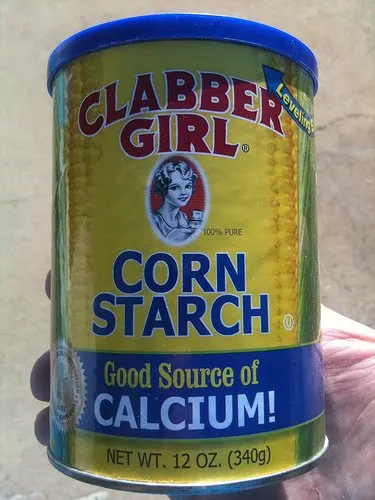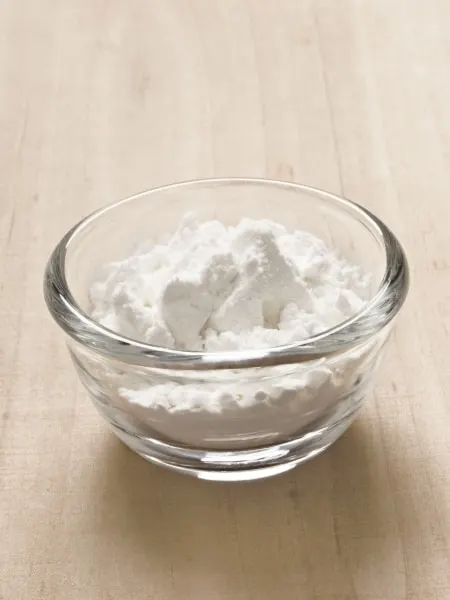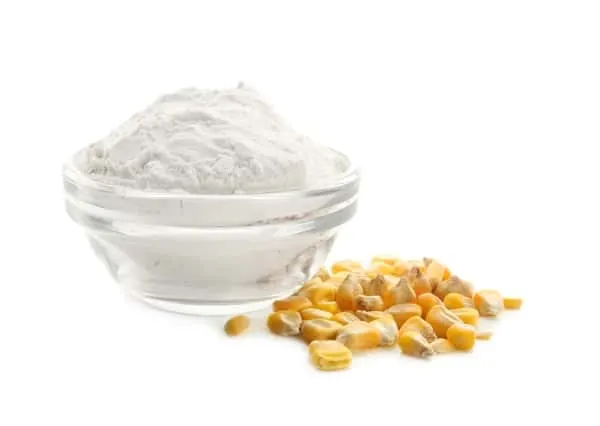Nobody really uses cornstarch all that often. I mean even if you use it for all your sauces and many soups, it’s still not that often, right?
And sooner or later, there will be a day that you notice that the container has passed the date on the label. That’s when you ask yourself : can I use cornstarch past the expiration date? Or should I throw it out and buy a new container?
Or maybe you feel a bit confused with all the “corn” products available. And you’d like to know how are corn flour, cornmeal, and cornstarch different.
They look quite similar, and many people get them confused. And using one instead of the other in a dish in some cases spells disaster. Or a less than perfect meal, at the very least.
Anyway, below I talk about the shelf life and going bad of this thickening agent. I also added a section on the differences between the corn products, in case you need a refresher.

Can Cornstarch Go Bad and How To Tell If It Is Bad
Cornstarch is good to use in recipes indefinitely ([AS]). Unlike baking powder, it doesn’t lose its potency over time.
In other words, if you wanted to know if cornstarch (or corn starch) does lose its effectiveness, the answer is no. That also means that you can freely use “expired” cornstarch.
In some cases, you might notice that the quality of the powder isn’t that great after a couple of months past the best-by date on the label. But after mixing it with the liquid, the difference will be close to none.
But having indefinite shelf life doesn’t mean that cornstarch can’t go bad. If moisture gets to the container, it will go moldy in a few days tops. So wet or moldy corn starch is something you get rid of right away. Same thing if you can find any pantry bugs inside the box.
In short, to make the cornstarch last forever, you need to take good care of it.

How To Store Corn Starch
Cornstarch, like other products in dust form such as flour or powdered sugar, doesn’t really need much in terms of storage. Just keep the product in a dry place and make sure it’s sealed tight when not in use ([AS]).
Many producers sell cornstarch in convenient resealable containers, which are ideal for keeping it for the long term. But if yours didn’t come in one, no worries. Transfer the starch to an airtight container, and you’re good to go.
In case you were wondering, refrigerating cornstarch doesn’t help it much. But if that’s your preference, you can store the powder in the fridge if you want to.
If you do that though, make sure the container is sealed tight. Otherwise, the powder will draw moisture from the air in the fridge and could spoil soon after.
Generally speaking, it’s better to just stick to a dark cupboard in the kitchen or pantry, as these are the best storage places.

Cornstarch vs. Corn Flour vs. Cornmeal: What Are The Differences?
There are quite a few products with ‘corn’ in their name out there. And if you’re like me, you find it super confusing. This short primer should give you the essential information you need, so you know which is which.
Both corn flour and cornmeal are ground maize. The difference is cornmeal is coarsely ground, and corn flour is finely ground ([WIKI1]). You can make corn flour from cornmeal, but not the other way around. Both have the corn flavor.
Cornstarch is made from starch derived from the maize ([WIKI2]). So it’s not the whole grain, but only the starch that’s in the endosperm. It’s tasteless and used mainly as a thickening agent for soups, sauces, and gravies.
Hope that clears things up.

Summary
- Store in a dry place, sealed tightly
- Lasts indefinitely, so you can use “expired” cornstarch
- While cornmeal and corn flour are whole corn grain ground, cornstarch is only the starch derived from the grain
References
- [AS] Args & Kingsford Corn Starch
- [WIKI1] Wikipedia: Cornmeal
- [WIKI2] Wikipedia: Corn starch